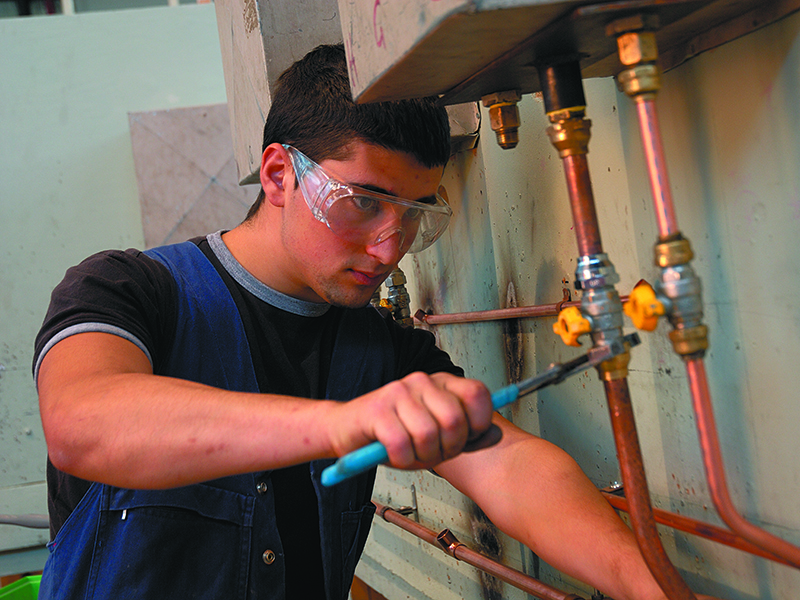How to Tighten Plumbing Fittings

It is not possible to tighten all the plumbing fittings. Before making any move, make sure your fittings are not soldered copper or glued plastic ones. The types of fittings you can tighten usually have threads or plumbing tape.
In a typical household plumbing, you will mostly find the ones with threads, such as drainpipes under the sinks and water supply connections.
Threaded fittings are surely the best ones. They are more durable plus create a wonderful seal. Even if there is no leakage, it is always better to tighten the settings after every while to avoid problems in future.
Things Required:
– Slip-lock pliers
– Plumbing tape
– 2 pipe wrenches
Instructions
-
1
You cannot afford to tighten a setting too much, because the excessive force could make things even worse. For instance, it is better to tighten the fittings around the P-trap assembly under a sink by hand.
Hold the pipe with one hand, and use the other one to tighten the screw. If you still notice any leakage, use slip-lock pliers. It is imperative that you don’t over-tighten, because this may crack the nut. -
2
To tighten the compression fittings on angle stops, use a wrench. You will find these settings in the form of shut-off valves connected to toilet and faucet water supply lines.
Turn the nut clockwise to stop the leakage. If you notice leakage even after proper tightening, you must remove the nut, and wrap the plumbing tape on the male part of the connection.
After wrapping the tape or thread, screw the nut back with the help of the wrench or slip-lock pliers. There is no need to be an extremist when it comes to stopping the leakage. You may need to change the nut to fix the problem. -
3
You need to be extra careful when it comes to work on a union or valve. A couple of wrenches are needed to do this job. Use one wrench to hold the pipe to eliminate any movement, and tighten the nut with the second wrench.
If you are working on gas or water supply lines, you must turn off the main valve to avoid any problem. If the leakage is still there, you need to remove the entire fitting, and wrap the male portion of the connection with tape or thread.






